The rules of the valleys of the Peru and Bolivia rivers decorate the unusual inflorescences of the Himenokalleis. But this beautiful native of Latin America has long been banging on our windowsill. This wonderful guest, which is often referred to as a spider lily, with a big hunting grows at home and rarely creates difficulties in treating himself. Therefore, it is not difficult to grow it, especially if you know the peculiarities of cultivation and care of mysterious hymenocallas.
Himmenokalles flower, cultural description
Hymenocallis - unpretentious bulbous plant, which provides the appeal of refined flowers. They have an amazing form of: flowers, like large white spiders, hang on curved peduncles. Special charm flower adds its sugary flavor, reminiscent of vanilla. It has plants and other names: Peruvian daffodil, lily gimenokallius and Spiderman.
Specific features hymenocallis:
- Hymenocallis - a houseplant that belongs to the family of Amaryllidaceae. Homeland lily spider - Latin America. It is also found in the Antilles, in the subtropical West Indies.
- Root hymenocallis - onion. From it sprout stalks up to 85 cm in height. Drooping stems, the leaves are missing. Narrow leaves and grows from a bulb. Leaves lanceolate, bright green color.
- Arrow rises above the rosette of leaves and topped with umbellate inflorescences. It flaunts six fantastic flowers. They have an elongated crown in the form of a bowl, her fringed edge slightly bent. Under long crown ring arranged like the tape, white petal color.
- hymenocallis plant blooms in July. Flowers appear alternately, allowing snog blooms for about three weeks. The flowers of 18 cm in diameter. Tonyusenkie stamens proudly look out from the crown. They often visible appendages, of which formed "pridatochny beater."
- After flowering lily, spider needs a rest. From August to September, the plant is in a period of rest. At this time, the bulbs are dug and often contain in cool conditions: at a temperature no higher than 10 ° C.
- Spider Lily not psychrophilic plant, so the temperature below 4 ° C heat for destroying them.
Hymenocallis, beautiful views
In nature, it identified nearly 50 species hymenocallis. But the culture is grown only a few species. Despite the uniformity of the flowers, they boast elegance worthy of decorative and easy acclimatization to the home microclimate.
- Hymenocallis pleasant. We kind of emerald foliage remnevidnoy form. Length leaf up to 40 cm, width -. 5 to 7 cm Flowering begins in July, but often begins a new wave of budding in September. After that, the leaves gradually die off. Winter - a time when hymenocallis "asleep."
- hymenocallis Caribbean. He has a bright green rosette of the leaves and characteristic of the type of white spider-spine. The highlight of the species is large inflorescences-umbrellas consisting of 6-12 flowers. This hymenocalleis is evergreen, and he does not need rest period. Flowers Caribbean Lily in winter, sometimes time to bloom three times.
- Himmenokalles wide-sized. High grade, which is drawn up to 90 cm. Linear foliage shape, rich-green color. Tubular flowers, petals bent, with a predominance of green.
- Himenokallis coastal. At the species, uncharacteristic color of foliage: Thin silvery stripes are inserted on a green background. This species and its colors are different: they are large, externally resemble daffodils, have a pastel-yellow shade, collected three pieces in inflorescence. The height of the type is no more than 45 cm. Length of leaves -80-90 cm, width - about 6 cm. It blooms this view in March-May.
- Himenokalles Karolinsky. Plant height 45-90 cm. Leaves are thin, light green, with a glossy surface. Flowers fragrant, wide (in diameter up to 18 cm), spider-shaped. It grows in height from 45 to 90 cm. Inflorescence forms exactly six flowers. Flowering falls on March-September. The period of "sleep" is summer.
- Himenokallis basket or leathery Narcissus. At the type of soft removal foliage. Flower stem high and reaches 100 cm in height. Flowers from June to August.
Himenokallis, planting pot
Himenokallis is well developing in a pot, although if desired it can easily plant in an open ground. The flower is unpretentious, but landing at home requires the hold of certain rules:
- Prepare a spacious pot for Himenokallis. The beautiful pot pot of four liters is ideal. In it, your plant will be able to fit its powerful root system.
- At the bottom of the pot, put the clamzite or other material suitable for drainage.
- There is no single opinion on the composition of the soil. You can purchase a mixture for bulbies in a flower shop. Or prepare the soil yourself, mixing the turf, sand, leafy land. For the cultivation of hymenocallas, it is desirable to use the weakly acidic soil.
- Fill the vase for 2/3, position the rhizome of the hymenochallis, suck it with soil. Be sure to leave a third of the bulbs above the soil surface.
Advice! As a rule, the plant transplantation is carried out every four years, since Himenokallis poorly transfers this process.
Himenokallis, home care
The approach to the care of lily-spider depends on the specific type of hymenochalis. Some types of origin of the tropics, so they do not need a period of rest, others from the foothills, so they need a "sleep" period.
Comfortable conditions for hymenocullas
The growth and flowering of lily spider depends on the microclimate in the apartment. Therefore, before choosing a place for a new flower, consider about the necessary lighting, humidity and temperature.
- Location and lighting. Vase with a flower is better located on a bright windowsill with bright lighting. Preference can be given to the south side. For hymenocullas without phase "Sleep" in the autumn-winter season, artificial lighting is added. In summer, you can easily put a vase for a balcony or garden.
- Temperature. In the process of vegetation, the lily spider is contained at a temperature of 18-20 ° C. After the completion of flowering, the plant is placed in cool conditions with a temperature of 5-15⁰s. Dug-in bulbs can be saved at 8-10 ° C.
- Humidity. In artificial increase in humidity, Himenokallis does not need. In hot time it is recommended to make a plating a warm shower, while only the leaves are wrapped, and the buds are covered.
Watering and feeding Himenokalles
- Watering Lilies-Spider is carried out using an estimated water. Water flower as the top ball dried in a pot. It is important to prevent strong soil drying. If moisture is not enough, the foliage will become soft and faded. But also overflowing is also unwanted: excess water will lead to the blowing of the bulbs.
- In order for the plant to feel comfortable, it is better to water it often, but in moderate volume. To prevent rot in the vase should be drainage and a hole for waste of excess water.
- Himenokalles during flowering period feed 3 times a month. This uses comprehensive fertilizer for flowering cultures. Outside flowering, the plant fertilize once every 1-2 months, and the types of hymenocallas, which "fall asleep", in the period of "sleep" do not feed.
Himmenokalles rest period
- All types of Lili-spider, come from foothills, for example, Himenokallis is pleasant, watering is reduced in October-November. In such a way, the plant is prepared for resting period. Himmecalis can last for up to three months.
- When the flower begins to actively dump the foliage, it is transferred to a cool place, it is desirable that it was dark, and the temperature did not exceed 10-12⁰. When the leaves are completely falling, watering stops until the beginning of March.
- On the eve of the spring, on the last week of February, the Lilia Spider rearranged to the usual place - a warm sunny window sill. During the month, the plant will start increasing the green mass.
Features of the reproduction of Himenokalles
You can grow a lily spider from seeds or new bulbs.
How to grow a hymenocallese from the bulbs
- Improve the hymenocallese by the method of separating young bulbs. The flower will acquire kids every 3 or 4 years.
- Bulbs are separated in the process of transplanting an adult plant when it is in the period of rest (autumn-winter).
- The soil is abundantly watered, and when it completely moisturizes, the bulb is removed from the pot.
- The bulb is cleaned from the ground, separated the bulbs and planted into the new pot.
- The maternal bulb is planted in a pot of slightly more compared to the previous one.
- For landing, a new nutritional soil of loose structure for bulbous plants is used.
How to grow hymenocallese from seeds
Seeds of Himenokalis can be bought in a flower shop, but this method of breeding is time-consuming and complex. Shoots germinate reluctantly and for a long time. The whole process can last more than two months.
- Seeds are sown in spring into the sandy-peat mixture.
- The pot with seeds is covered with glass, and regularly moisturizes the soil.
- Seedlings are kept in bright and warm room, without access of direct sunlight.
- After the appearance of the present leaflet, the greenhouse is removed.
- When seedlings are strengthened, it is seated into separate pots.
Himenokalis: why not blooms
- Choosing fertilizers for the plant, it is important to avoid mixtures with an increased nitrogen content. This element often serves as the rustling growth of the greenery and the absence of buds. Therefore, if Himenokallis does not bloom for a long time, you need to change the fertilizer.
- Another reason for the lack of flowering can be the incorrectly selected pot size. If the whole volume is filled with roots, the plant is difficult to gain strength for the bootonization. Therefore, you can try to transplant hymenocallas, but it is possible to do this only during rest.
- Also does not bloom in Himenokallis if he grabs light, too cold air, there is a deficit of nutrients. In this case, you need to reconsider the care of the home plant.
Pests and diseases of Himenokallis
Potential enemies of the hymenocallese - a web tick, triples and a wave. If these insects started on the leaves of the plant, you need to process them with accomplist.
The dangerous disease of Himenokalles is rot. It damages the bulb and completely destroys the plant. Only competent watering helps to prevent disease, so it is important to avoid overflow. If the hymenocalleis fell ill, it is necessary to remove the bulb from the soil and cut off the loading area. But as the experience of flowerflowers shows, the plant can be saved very rarely.

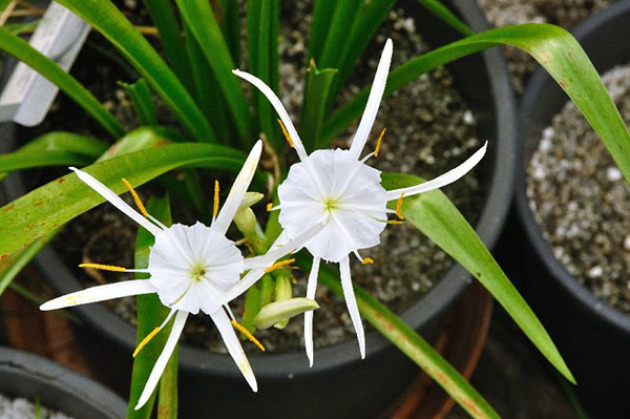
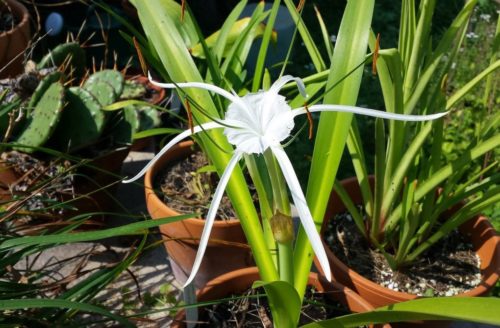
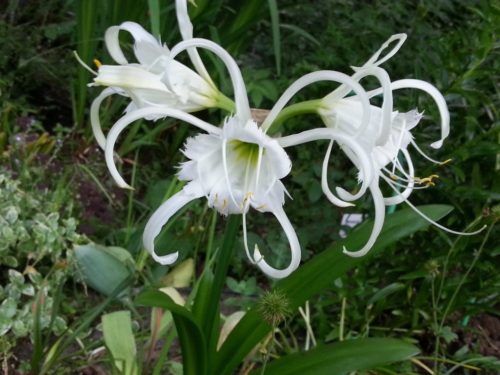

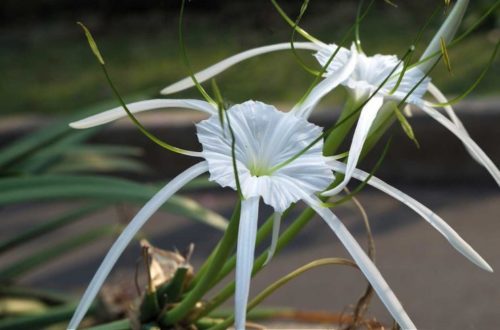
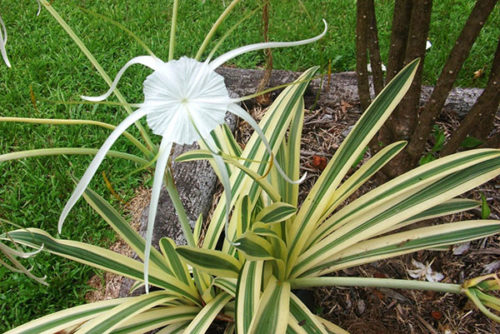
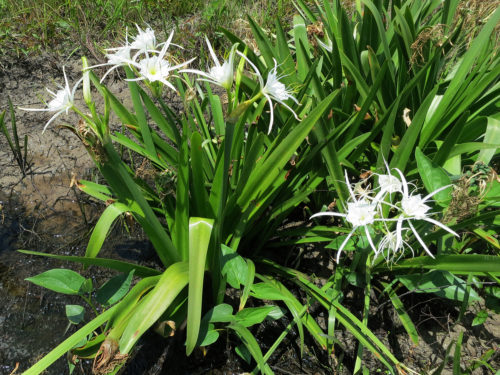
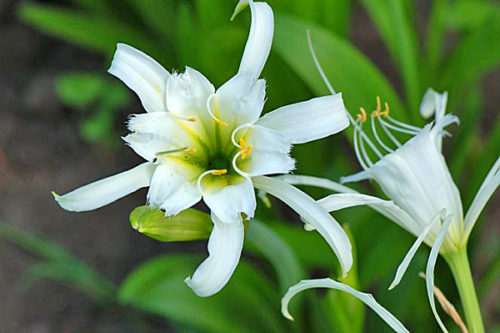
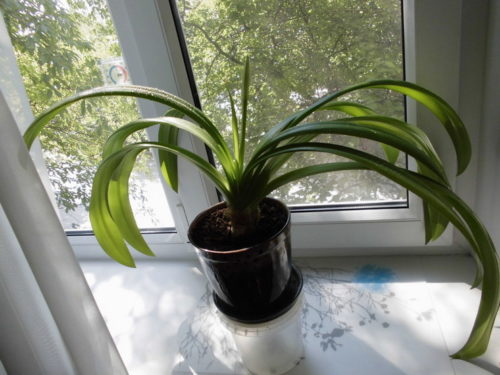
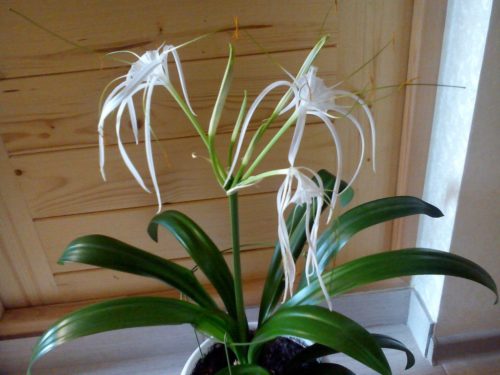
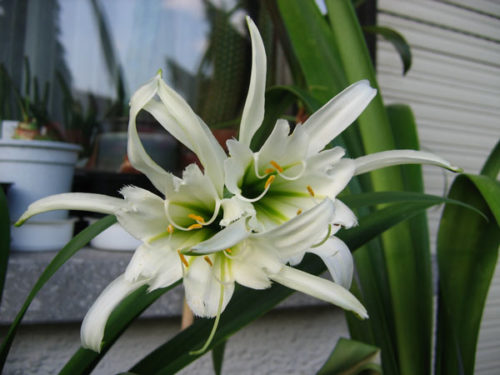
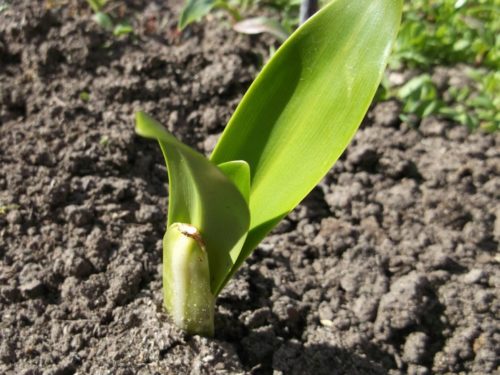
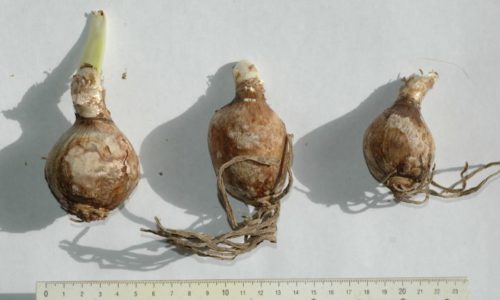
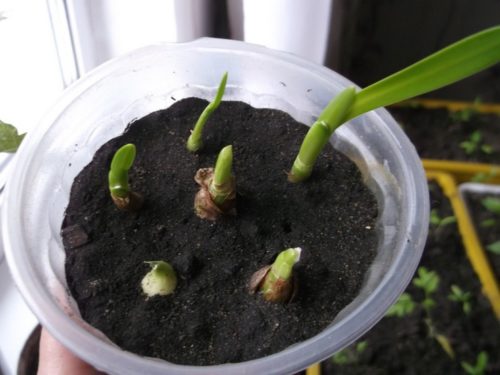
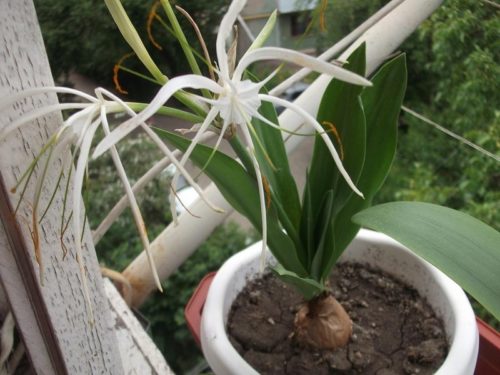
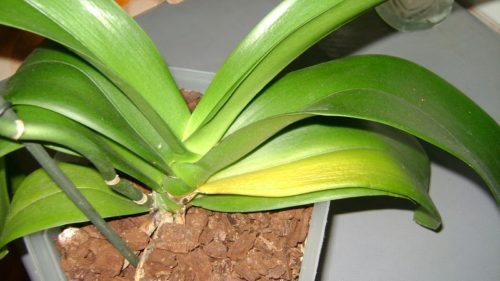
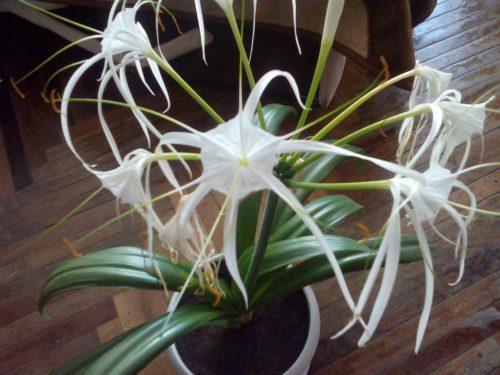
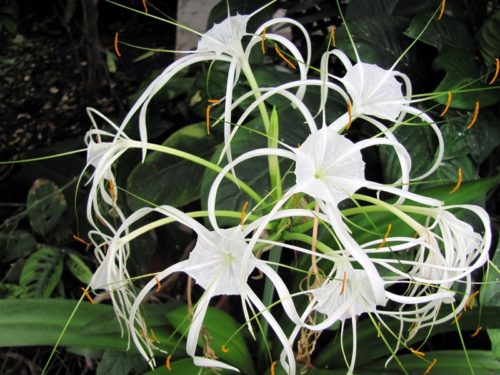

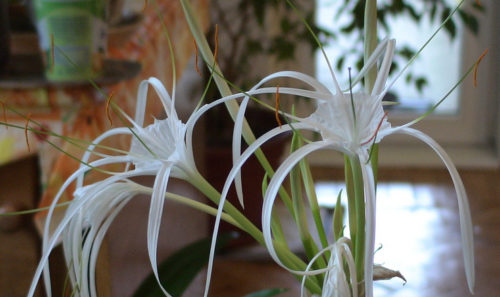
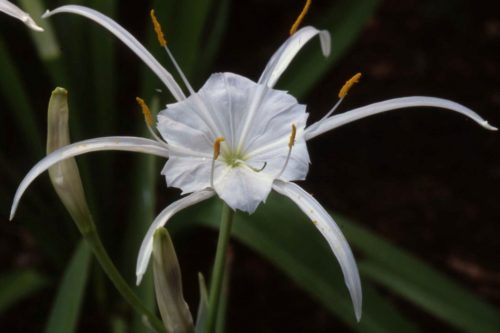












 Start a discussion ...
Start a discussion ...